Reviews
Frederick Wiseman
USA, 1997
Credits
Review by Evan Kindley
Posted on 25 June 2008
Source Zipporah Films DVD
Categories Frederick Wiseman
A film about public housing, shown on public television, inevitably raises some questions about what that difficult word “public” might mean. In the case of a “public housing project,” it means a government-owned and funded residence for the most economically disadvantaged Americans—places now virtually synonymous with crime, drugs, failed educational initiatives, teen pregnancy, and a host of other social evils. In the case of “public television,” it means a network of non-profit television stations, dedicated to a mix of high culture for its own sake and expressions of American liberal democratic social conscience—in other words, perhaps the only conceivable venue for a filmmaker such as Frederick Wiseman. The hidden irony of Wiseman’s Public Housing, filmed at the historically troubled Ida B. Wells Housing Development in Chicago, is in the considerable gulf between these two publics - the first poor and (on the evidence of the film) exclusively African-American, the second middle to upper-middle class and disproportionately white - and the failure of the ideal that supposedly unites them.
Where have we seen landscapes like the ones in Public Housing before? If we live in large cities, we’ve probably walked through them, or maybe nervously away from or around them. But even if we occupy some idyllic rural or suburban space, at a safe remove from such “rough” areas, we’ve probably seen something like them on, say, The Wire, or some other gritty crime drama, or in the backgrounds of hip-hop videos. (In Public Housing, we watch a film crew from “Berry Juice Records, Inc.” manage a large crowd of bored-looking youths who finally explode with excitement as the rappers roll up in a sportscar … at which point Wiseman cuts.) Public Housing was made in 1997, and while it’s always a puzzle to know how “with it” the contrarian Wiseman cared to be after his brief moment of national notoriety in the late 60s and early 70s, one wonders if it was conceived as a response to the aestheticizing of America’s urban ghettos. During this period public housing projects were suddenly visible in media representations as never before, whether via the much-discussed musical genre of gangsta rap or in films like John Singleton’s Boyz N The Hood or Spike Lee’s Clockers. As shocking and powerful as these images were in the 90s, we can also reflect, with the benefit of hindsight, that they showed a very partial perspective of these areas: for the most part they presented the projects as seen by young black men desperate to transcend them, whether through celebrity or crime.
Wiseman shows us the projects from a different angle. His subjects tend to be the elder occupants of the Wells complex, who are among the most physically helpless, the most dominated, and yet often the most passionate, engaged and articulate members of the community. The presiding figure of Public Housing is Helen Finner, head of the Resident Advisory Council and a tireless activist for the Ida B. Wells community. We first see her on the telephone in her office, a crucifix above her head, a Pepsi on her desk, and a young homeless mother shivering in a blanket before her. She looks like she could be a resident of the projects herself: she’s overweight, has missing teeth, and wears gaudy earrings, oversized plastic glasses, a headscarf and a worn red t-shirt that reads “COMMUNITY STRENGTH.” “We got over 200 and some vacancies just sitting here…. And then they’re gonna tell me there’s a waiting list?” she yells into the phone. This is an intense beginning, plunging us immediately into the world of public housing, where the only way to get results is to forcibly demand them. Ms. Finner finishes up and escorts the girl to the door: “Don’t you get upset—because you’ve got somebody fighting for you.”
This scene sets the tone for a series of encounters between residents of Ida B. Wells and various police officers, social workers, drug counselors and maintenance workers employed by the Chicago Housing Authority. In a sense, Public Housing is another of Wiseman’s films about pedagogy: again and again it presents us with someone who “knows better” trying to get through to someone who doesn’t. We see a policeman grilling a young woman he suspects of using drugs, and ending by promising to make her his “special project”; a drug counselor interviewing a crack-addicted man with six children; a sex ed teacher heroically making her way through a birth control lesson for a room full of teenage mothers attending to their screaming kids. What’s remarkable about these scenes is the rhetorical skill these public workers, all of whom are black, bring to communicating with the Wells tenants, dipping in and out of slang, adopting a familiar, even familial, attitude towards their listeners, while all the time presenting them with relatively sophisticated and convincing arguments for better behavior, without a touch of condescension or bureaucratic coldness. (Some of this versatility of tone is undoubtedly due to racial solidarity across class lines: the residents of Ida B. Wells accept these clearly better-educated, higher-earning people as their own in part because of their skin color.) In scene after scene, we sense the workers’ frustration with many of the hopeless people they see around them, but also their patience and empathy.
The culmination of this series is a speech given by ex-basketball player and current HUD official Ron Carter to an assembly of City College students about starting their own businesses to rejuvenate the community. “We got the shot of a lifetime,” Carter tells the all-male audience, explaining that the power structure in place under the Clinton Administration for awarding government subsidies is entirely composed of minorities. “Don’t y’all go nowhere—what we need to do is take care of our own.” This rhetoric of self-help is recurrent throughout the film: just a few scenes earlier we’ve heard a hand puppet say to a room full of kindergarteners, “We gotta take care of our own community, ‘cause if we don’t do it, nobody else will.” The implication is that where the state and the market have failed, the black community might still succeed; in order to do so, they need to make themselves into a new kind of public, one that realizes its own interests and does something about it.
Public Housing is considered by some to be Wiseman’s masterpiece, but this judgment probably depends on what you want from his films. For me, he’s most successful when there’s a certain productive tension between the world filmed and the ideas its recording gives rise to, so that the film actually feels, in some small way, like a contribution to the problems it presents. That’s missing from Public Housing, and while it would be beyond heartless to wish that the participants in the film hadn’t stayed quite so “on message,” it does push the movie closer to propaganda than Wiseman’s best films usually come. Ida B. Wells, clearly, is a community that needs all the public feeling it can get. PBS, on the other hand, is an object lesson in the idea that public feeling, however deep, might not be enough: we might need some serious, trenchant, unsentimental thinking as well. In that way, Wiseman’s film, and his whole filmmaking ethos, is out of step with the mood of the projects, where liberalism and the public interest have led to nothing but desolation. If there’s hope on the horizon for communities like Ida B. Wells - and there’s plenty in Public Housing to suggest that there is - it won’t come from public institutions.
More Frederick Wiseman
-
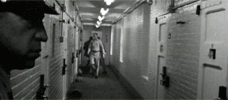
Titicut Follies
1967 -
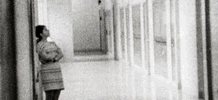
High School
1968 -

Law & Order
1969 -

Basic Training
1971 -

Juvenile Court
1972 -
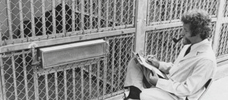
Primate
1974 -
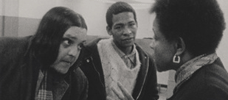
Welfare
1975 -

Meat
1976 -
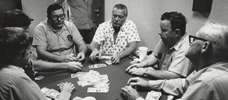
Sinai Field Mission
1978 -

Manoeuvre
1979 -

Model
1980 -

The Store
1983 -

Blind
USA -

Adjustment & Work
1986 -

Missile
1987 -

Central Park
1989 -

Near Death
1989 -

Aspen
1991 -

Zoo
1993 -

High School II
1994 -

Ballet
1995 -

La Comédie-Française
1996 -

Public Housing
1997 -

Belfast, Maine
1999 -

Domestic Violence / Domestic Violence 2
2001 / 2002 -

The Last Letter
2002 -

State Legislature
2006
We don’t do comments anymore, but you may contact us here or find us on Twitter or Facebook.



